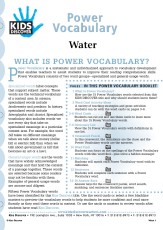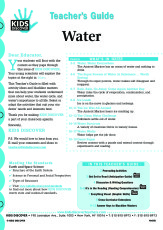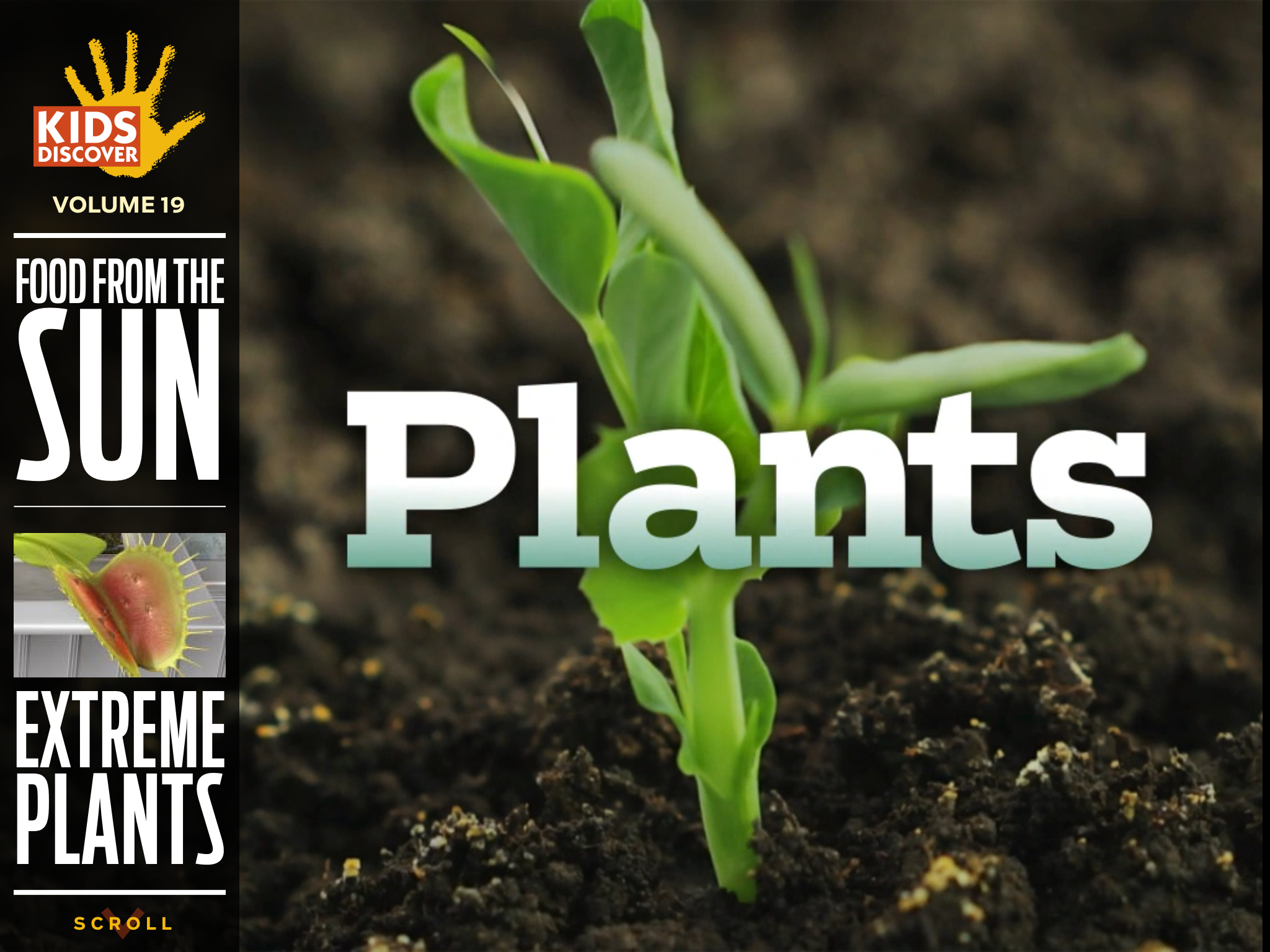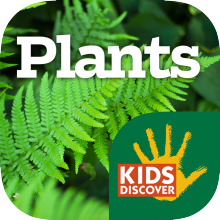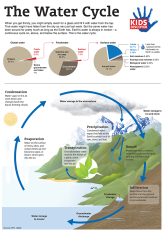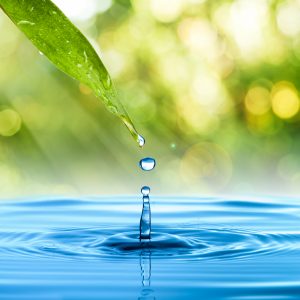 Water. It comprises almost two-third of our bodies. It covers over two-thirds of the Earth’s surface. By almost any measure, water is life…. and so much more.
Water. It comprises almost two-third of our bodies. It covers over two-thirds of the Earth’s surface. By almost any measure, water is life…. and so much more.
Among other things, water is a super resource for science activities. You might be surprised at the amount of learning that can come from one tub of the wet stuff.
Buoyancy
Buoyancy is the upward force on an object that is produced by a surrounding gas or liquid, such as water. You’ll find a sentence similar to this in many science textbooks. But what does it really mean—water produces an upward force—huh? Most students probably will read a sentence like this and move on without pausing to think about it. Here’s an activity to bring the sentence, and the concept of buoyancy, to life:
To prepare, challenge pairs of students to engage in a friendly game of arm wrestling. Then discuss the experience. Did students feel the force of their opponent pushing against their own efforts? Now, challenge students to submerge a beach ball in a tub or sink of water and describe how that experience compares to arm wrestling. Speaking from personal experience, it can be a real challenge. For sure, students should feel the force of the water pushing up against the ball just as they felt the force of their arm-wrestling opponent. Yes, water does exert an upward force.
Sinking and Floating
Water buoyancy is connected to sinking and floating, a phenomenon your students probably are familiar with. When the downward force of gravity is greater than the upward force of a liquid, an object sinks; otherwise it floats. Many middle school science books explore this concept in terms of density: Objects that are less dense than water float; other objects sink.
What happens when the water is in solution with salt? Sugar? Food coloring? Baking soda? How is density affected? To find out, fill a few glasses half full with water. Place an egg in each glass and ask students to describe what happens. (The egg sinks.) Enlist volunteers to stir in tablespoons of salt to one glass, and tablespoons of other materials to each of the other glasses. Urge them to keep track of how much of each material they add and to observe the egg as they go along. What happens to the egg in each solution? What can students infer about the density of each solution, based on their observations? Now, ask for a prediction: What if students used an eyedropper to gently drop a water-and-food-coloring solution onto the salt water—would the colored water sink or float? (It floats.)
Cohesion, Adhesion
Whether an object sinks or floats is connected to its density and to the tendency of water molecules to stick together. To explore, fill a bowl with water. Then challenge students to test different ways to put paper clips on the water’s surface so they float. Guide students to apply the concept of buoyancy to help explain why laying a paper clip flat on the surface enables it to float while standing it on end or laying it on an angle causes the paper clip to sink.
Point out that a second phenomenon is also at work: cohesion. Water molecules cohere or stick together, forming a kind of skin called surface tension. Surface tension enables some insects to actually walk across a pond without sinking. To investigate further, have students repeat the paperclip activity with alcohol instead of water and observe the results.
Cohesion is a useful property, but it has its limits—luckily. If there weren’t a stronger force than cohesion, how would water travel from the roots of a tree upward, against the force of gravity, to the tree’s tallest branches? If water only “stuck” to itself, it would stay in the tree’s roots indefinitely.
Lucky for us, adhesion is stronger than cohesion. Adhesion causes two different materials to stick together. To see the force of adhesion at work, have students roll and flatten a sheet of paper towel. Suggest they place one end in a glass of water and the other in an empty glass an inch or so away. Ask students what they think will happen. During the course of a day, encourage students to observe. The water will travel up through the paper towel into the empty glass. That’s the very process that takes place when water travels up the roots to the stems and leaves of a plant. It’s called capillary action, and it’s based on water molecules adhering to the molecules that comprise the paper towel (or plant stem).
When it comes to cool activities with water, this is only the tip of the iceberg (pun intended). You could probably build an entire science curriculum around water! If that idea has appeal, check out this site for lots more possibilities: http://pbskids.org/zoom/activities/sci/.
It’s true that in some parts of the country water is in seriously short supply, but each glassful can go a long, long way in science. It may well be worth it.


